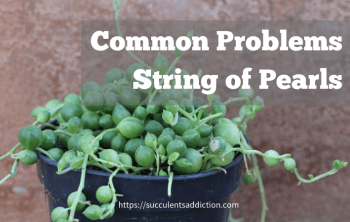Echeveria need bright sunlight to maintain their colors and compact rosette form. They will not survive a hard frost, but if there is a risk of freezing temperatures they can be brought indoors to grow on a sunny window sill or under a grow light.
Keeping this in consideration, how do you take care of blue Echeveria?
Echeveria Plant Care Indoors
- Indoor Echeveria Care.
- Light: Place indoor echeveria where they will get a lot of sunlight; without high light, they will likely begin to stretch out of their tight rosette form. …
- Soil: Echeveria require excellent drainage, so choose or make a potting mix that provides it.
Subsequently, why do succulents turn blue?
If your succulent’s leaves are turning red, orange, blue, or purple, it means that your plant is a little stressed! Succulents produce pigments called anthocyanin and carotenoid in response to environmental stressors like intense sunlight and heat.
How do you take care of a blue rose succulent?
“Blue Rose” has typical watering needs for a succulent. It’s best to use the “soak and dry” method, and allow the soil to dry out completely between waterings.
How do you take care of a blue elf succulent?
Once indoors, place it in bright light or sun from a southern window. Avoid drafts around your indoor plants but do provide good air circulation from a fan. Limit watering even more when the plant is indoors in winter.
How often should you water an Echeveria?
Generally speaking, count on watering once every week to ten days; however, small variables such as pot size and plant size may influence this schedule. It’s best to simply check your soil every few days and water when it is nearly completely dry.
How do you know if Echeveria needs water?
The first thing you’ll notice when a succulent needs more water is that the leaves feel rubbery and bend easily (see photo below.) They won’t necessarily change color, like they would when they are over-watered. 2. The second sign your plant is under-watered is shriveled and wrinkled leaves (see photo below.)
Should I pull dead leaves off succulents?
Succulent Growth
And though most succulents can seal off damaged parts, it is always good to quickly remove broken, diseased, or dead leaves, stems and flower stalks. … Because new growth typically sprouts near the end of cut ends, simply prune stems to where you want new growth to emerge.
Do succulents like to be touched?
Generally, succulents yield to your touch. A healthy succulent should be rigid when touched, but an unhealthy one might be turbid or flaccid. Some sick plants may remain rigid but not as stiff as a healthy succulent. A healthy succulent may not yield to your touch but will feel rigid.
What does an overwatered succulent look like?
The leaf on the right is from an overwatered succulent. It’s a pale yellow, you can see light shine through it, and it’s mushy and wet. Pro Tip: Pick up your pot after you’ve watered and feel how heavy it is.
Should succulents be in small pots?
As a general rule, I recommend leaving about a half-inch of space between your succulents and the edge of the pot, so they’ll have a little room to spread and grow. Too much space can actually prevent a succulent from growing much larger, because the roots spread out before the succulent has time to catch up.
Why are my succulents turning purple?
Succulents turning purple or changing colors can be natural or due to stress. If your succulents turn purple or red due to stress, then it can be due to sudden temperature changes, too much heat or light, lack of feed and water. Succulents turn purple or red due to pigments called anthocyanin and carotenoids.
How do I make my succulents colorful?
Anthocyanins gives plants their red, blue or purple color. Carotenoids give plants a yellow or orange color. Keep your succulents in bright, direct sunlight to help bring out their color.

